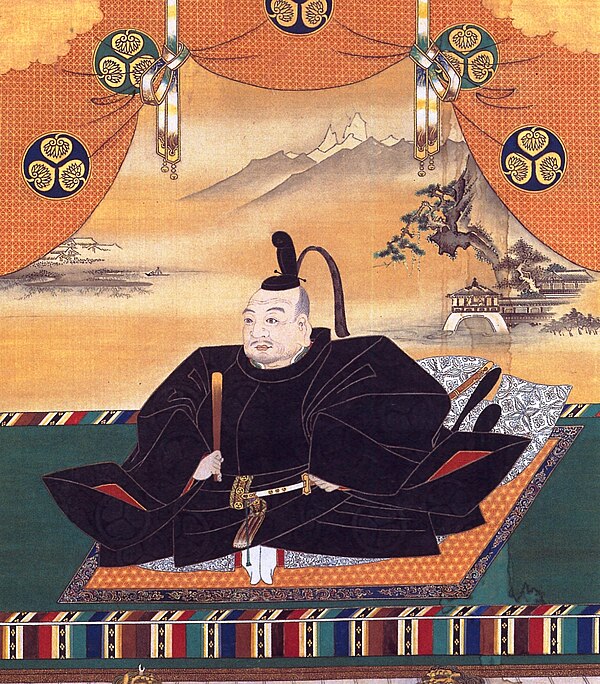The Battle of Sekigahara, fought on October 21, 1600, in present-day Gifu Prefecture, Japan, marked a crucial turning point at the end of the Sengoku period. This conflict saw Tokugawa Ieyasu's forces clash with a coalition of Toyotomi loyalist clans led by Ishida Mitsunari. During the battle, several of Mitsunari's allies defected, significantly tipping the scales in favor of Ieyasu, who emerged victorious.
Regarded as the largest and most significant battle in Japanese feudal history, Sekigahara not only decisively defeated the Toyotomi loyalists but also paved the way for the establishment of the Tokugawa shogunate. Despite the battle occurring in 1600, it took Ieyasu three more years to fully consolidate his power over the remaining Toyotomi clan and the various regional lords, or daimyō. However, the victory at Sekigahara is often viewed as the unofficial commencement of Tokugawa rule, which would dominate Japan for over 250 years until the Meiji Restoration in 1868.
Background
In the waning years of Hideyoshi's rule and after his death in 1598, two major factions emerged within Japan. Tokugawa Ieyasu, a senior figure with significant influence and the support of many eastern lords, became a central figure. Conversely, Toyotomi clan loyalists, along with western Japanese lords, aligned with Ishida Mitsunari, leading to increased tensions and occasional outbreaks of open conflict. These disputes set the stage for the Battle of Sekigahara in 1600.
During this period, Katō Kiyomasa and Fukushima Masanori openly criticized key Toyotomi bureaucrats, particularly Mitsunari and Konishi Yukinaga. Ieyasu capitalized on this discord to weaken the Toyotomi faction, amid growing rumors that he intended to assume Hideyoshi's legacy. The political atmosphere was charged with suspicion, especially among Toyotomi loyalists who feared Ieyasu's motives.
The situation escalated when a plot to assassinate Ieyasu was uncovered, leading to accusations against several Toyotomi loyalists, including Maeda Toshiie's son, Toshinaga, who were coerced into submitting to Ieyasu's authority. Further conflict arose with Uesugi Kagekatsu, another of Hideyoshi’s appointed regents, who defied Ieyasu by militarizing his domain. After Ieyasu demanded Kagekatsu travel to Kyoto for an explanation, Kagekatsu’s advisor, Naoe Kanetsugu, issued a sharp rebuke of Ieyasu’s actions.
In response, Ieyasu mobilized his supporters for a military campaign against the Uesugi clan, while Ishida Mitsunari took advantage of the ensuing chaos to form an alliance against Ieyasu’s forces. This complex web of alliances, suspicions, and military movements directly led to the pivotal Battle of Sekigahara, fundamentally altering the power dynamics of Japan.
Battle
On October 21, 1600, the Battle of Sekigahara commenced under the veil of early morning fog caused by the previous day's rain. Both the Tokugawa and the Toyotomi loyalist forces initially withdrew upon unexpectedly encountering each other, but the fog's clearing around 8:00 AM revealed their respective positions, leading to the start of the battle.
The battle began aggressively with Tokugawa's vanguard, led by Fukushima Masanori, attacking along the Fuji River. The muddy terrain turned the clash into a brutal melee. Simultaneously, Tokugawa forces launched attacks on other fronts to support Fukushima's advance. Despite these efforts, the Western Army's center remained robust, prompting Ishida to command reinforcement from Shimazu Yoshihiro, who refused, citing Ishida's lack of authority among the daimyō.
As the battle intensified, Kobayakawa Hideaki, initially neutral despite prior arrangements to defect to the Tokugawa side, was compelled into action around noon, attacking the position held by Ōtani Yoshitsugu. Despite initial resistance, the defection of additional Western Army daimyōs, such as Wakisaka Yasuharu and others, decisively shifted the battle's momentum in favor of the Eastern Army.
The Western Army's position unraveled quickly after Kobayakawa and Fukushima breached their right flank. With Ishida's forces crumbling, he retreated to Mount Nangu, where further betrayals from within the Mōri army, commanded by Kikkawa Hiroie, sealed his fate. The remaining Western Army forces disintegrated, with many commanders either escaping, being captured, or committing suicide.
Significant was the role of late-arriving forces which could have altered the battle's outcome. Tokugawa Hidetada's detachment, despite a vast numerical advantage, failed to capture Ueda Castle due to Sanada Masayuki's strategic defense. Concurrently, Toyotomi forces delayed by Hosokawa Yūsai at Tanabe Castle also failed to arrive in time.
Aftermath
Following the decisive Battle of Sekigahara on October 21, 1600, Tokugawa Ieyasu solidified his control over Japan. The subsequent public executions of key Toyotomi loyalists, including Ishida Mitsunari, Konishi Yukinaga, and Ankokuji Ekei on November 6, significantly diminished the influence and reputation of the Toyotomi clan and its remaining supporters. In the aftermath, Ieyasu took strategic steps to consolidate his power further by redistributing lands and fiefs among the daimyō.
Ieyasu rewarded those lords who had supported him during the conflict with lands and titles, thus securing their loyalty and strengthening his political base. Conversely, those who had opposed him were either displaced, punished, or exiled, effectively neutralizing potential threats to his authority. This redistribution not only rewarded his allies but also allowed him to assert control over former Toyotomi territories, thereby expanding his domain and laying the groundwork for the establishment of the Tokugawa shogunate, which would govern Japan for over two centuries.





















































































